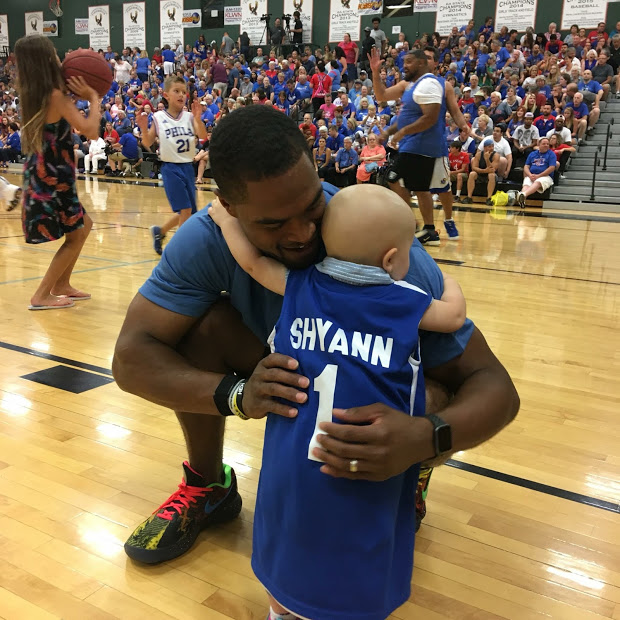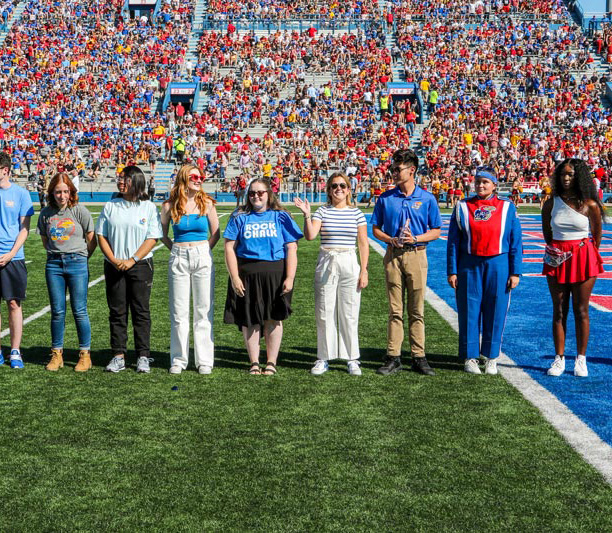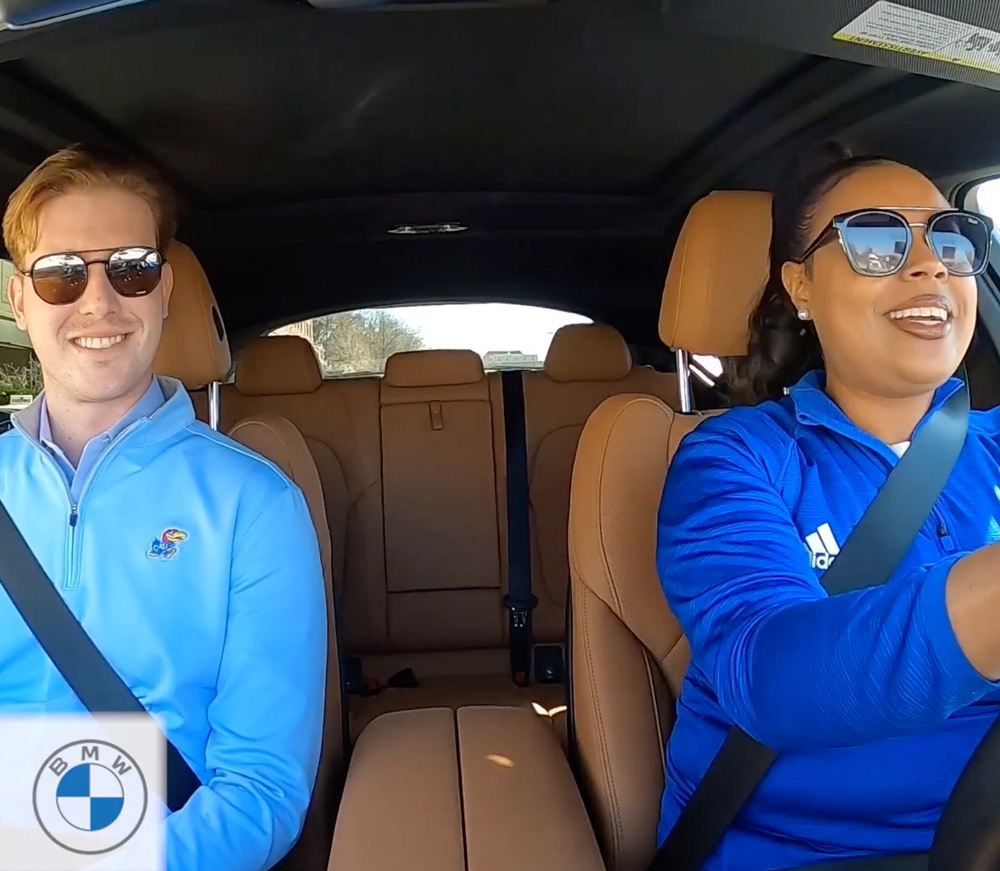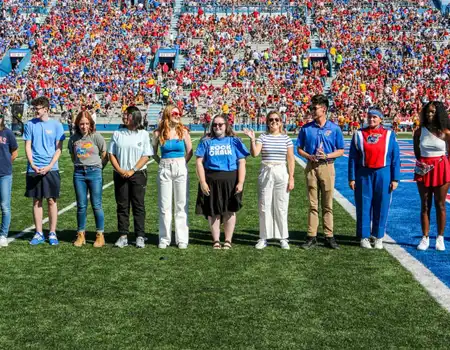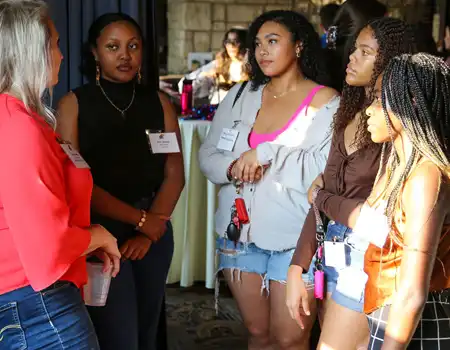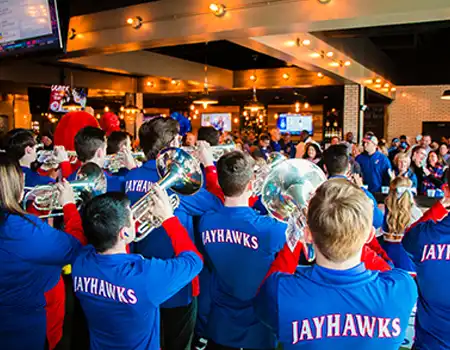The Galapagos Islands: A Living Museum
- February 24, 2024
- Alumni, News
Austin Johanning, g’21, assistant director of donor relations, hosted a Flying Jayhawks trip to the Galapagos Islands January 17-27.
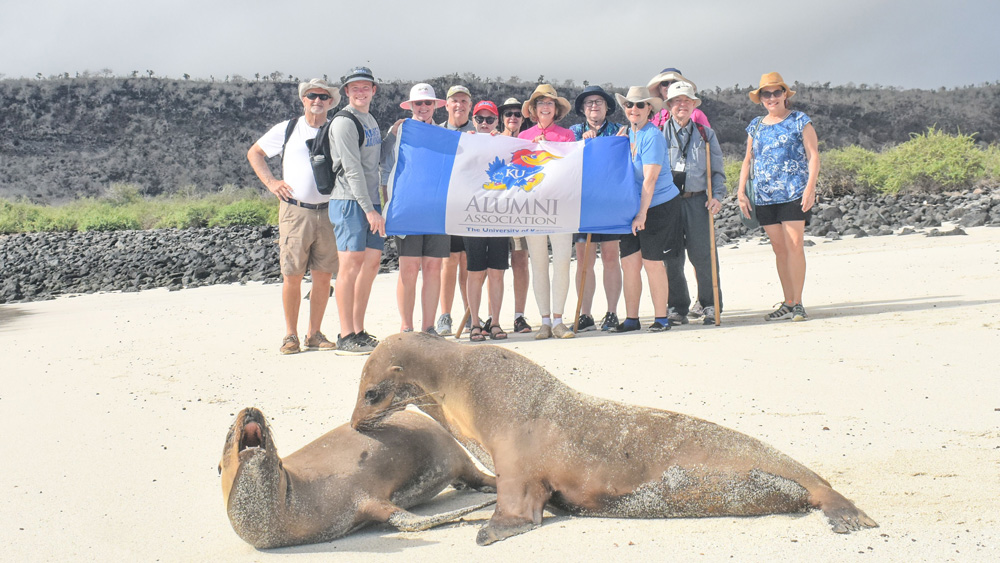
There is something special about traveling to a place that you do not have much first-hand knowledge about. It’s even more remarkable that you could experience this with a group of 12 fellow Jayhawks! That was me before my journey to the Galapagos Islands. Before my departure, I knew little about the islands outside of what a few people had told me or the information I read online. Those who had been there before said the wildlife is truly remarkable and that photos simply do not do it justice. And they were right.
Before we flew out to the Islands, we spent a day and a half in Quito, the capital city of Ecuador. I had no knowledge of Quito before arriving, but I quickly learned about its rich history in the short time we spent in the city. Sitting at just over 9,000 feet, Quito is one of the highest capital cities in the world and is home to 2.8 million people. Due to the elevation and location close to the equator, the weather is fairly constant year-round with highs in the low 70’s and lows in the 50’s. It was a perfect getaway from the cold January weather in Kansas.
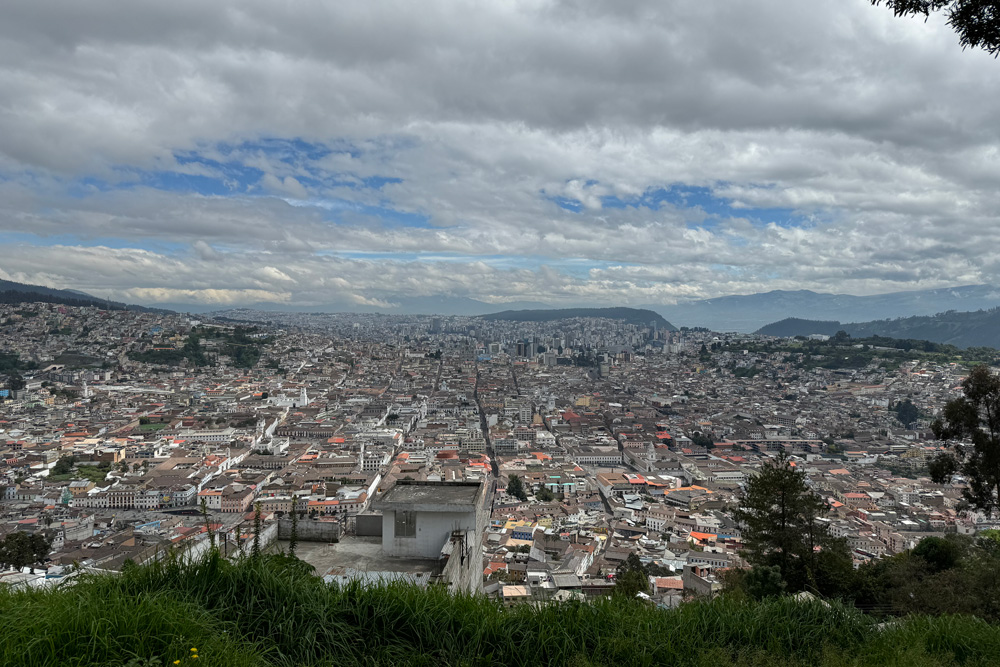
We spent our day in Quito visiting local shops and markets and learning how their families started the various businesses. My favorite stop was at a local chocolatier, Indemini Báez Chocolate. It was here that we learned about the process of turning a cocoa bean into chocolate. This was a very insightful and delicious presentation where they made truffles in front of our eyes. During the short time we were in Quito, we stayed at the Casa Gangotena, a 5-star hotel located in the heart of Quito’s historical district.
The following morning, we transferred to the airport to catch our flight to the Galapagos Islands. Upon landing in Baltra, one of the larger islands, the wildlife welcomed us, as there were land iguanas everywhere. They were a beautiful yellow and orange color and allowed us to get close to take photos.
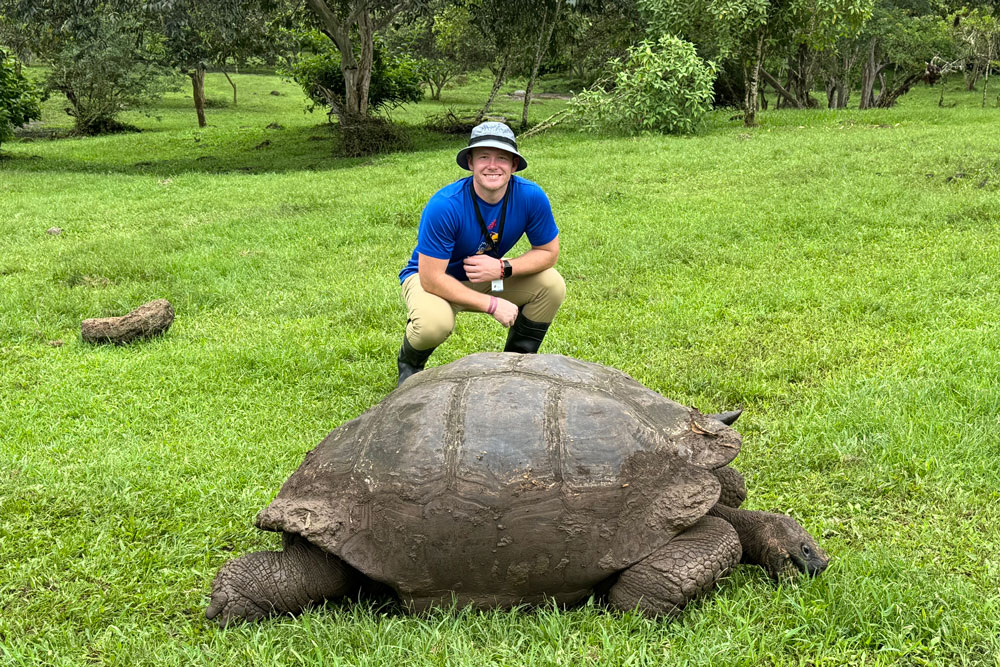
During our 45-minute bus ride to the tortoise sanctuary, we encountered just how much the climate on the island changes from place to place. We started our bus trip in the “low-lands,” where it rarely rains, and within 30 minutes, we were driving through the “high-lands,” where it was raining and very humid. Upon arrival at the tortoise sanctuary, we saw tortoises everywhere. This was one of our group’s favorite spots to visit because there were 100-year-old tortoises everywhere, and they were so much larger than any of us could have imagined. Upon our departure from the sanctuary, we made our way to the port to embark on the Isabella II, our home for the next four days.
Over the next four days, we visited numerous islands: Santiago, the Chinese Hat Islet, Santa Cruz, Santa Fe and South Plaza Islands. During each stop, we had the chance to go ashore and learn about the wildlife native to the island and snorkel around the island to see what lay below the surface of the surrounding crystal-clear waters. Below are the highlights from each stop:
Santiago Island & the Chinese Hat Islet
The stop on Santiago Island offered the most wildlife. It was here we were able to see the Blue-Footed Booby (my personal favorite), the Galapagos Hawk, Sea Lions, Marine Iguanas, as well as hundreds upon hundreds of Sally Lightfoot crabs which have a very beautiful red, orange and yellow color to them. As we snorkeled around the Chinese Hat Islet in the afternoon, we saw penguins (!), white-tip reef sharks, sting rays, eels and a variety of fish.
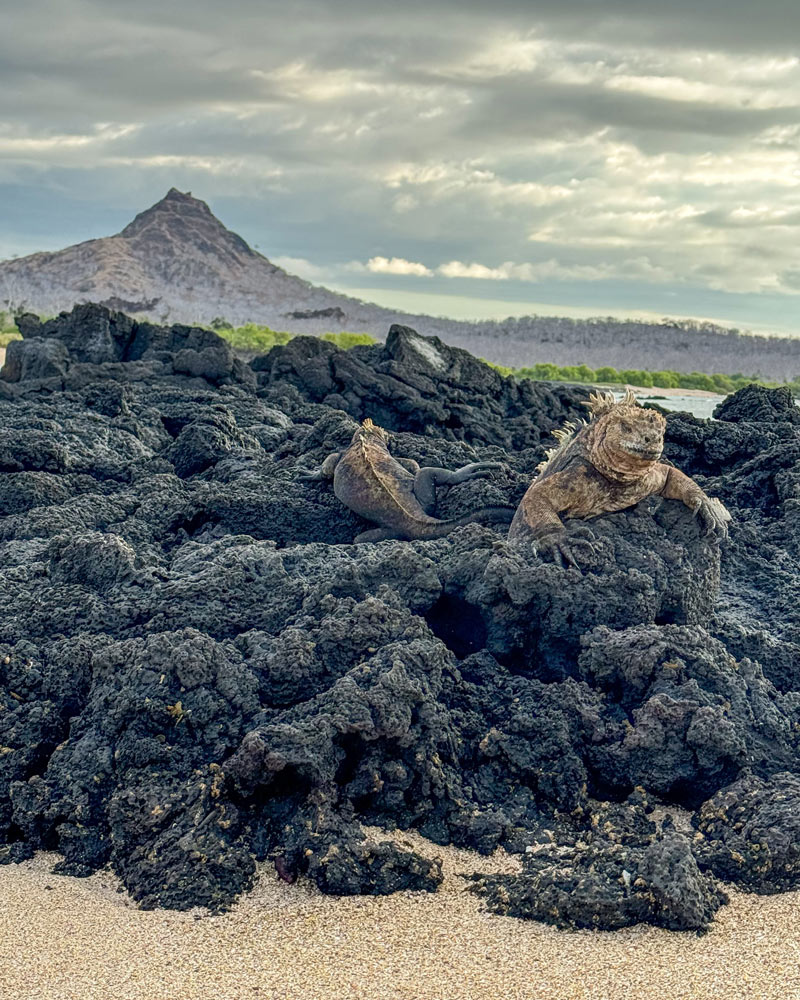
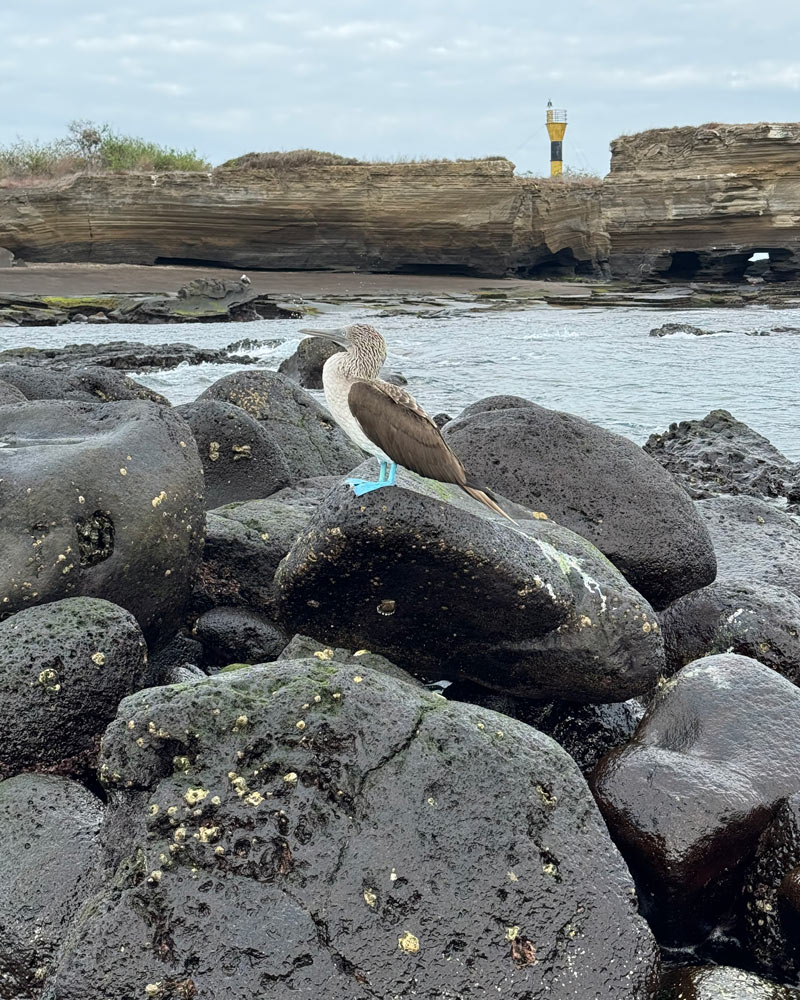
Santa Cruz Island
The stop on Santa Cruz offered a much different landscape. There were lava rocks everywhere and a desert-like landscape. During this stop, we saw some gigantic land iguanas and the holes they dug in the ground as their shelter or home. Before getting back aboard the boat, we saw a couple of marine iguanas that were sunbathing, and they allowed us to get some great photos of them. The snorkeling around Santa Cruz was not great as the weather was cloudier and the water rougher than expected. We were still able to see a variety of fish, a black-tip reef shark and some more blue-footed boobies.
Santa Fe Island
This island was far and away everyone’s favorite stop, and there were sea lions everywhere! As we boated to shore, Sea Lions were just waking up and getting out to the rocks to sunbathe. We could see every kind of sea lion, from the alpha male to the newborn babies. Upon landing on the shore, there were a couple dozen sea lions lying all over. This allowed for a great photo opportunity for our Kansas Alumni group. Following a short hike to see some more iguanas, a Galapagos Dove and one of the famous Darwin Finches, we returned to change into our snorkeling gear
There is something so calming about swimming with sea lions. They are like puppies and so playful. Their favorite thing to do was swim around us and nibble on the fins we were wearing. While in the water, we all encountered a sea turtle swimming, which was a highlight for many.
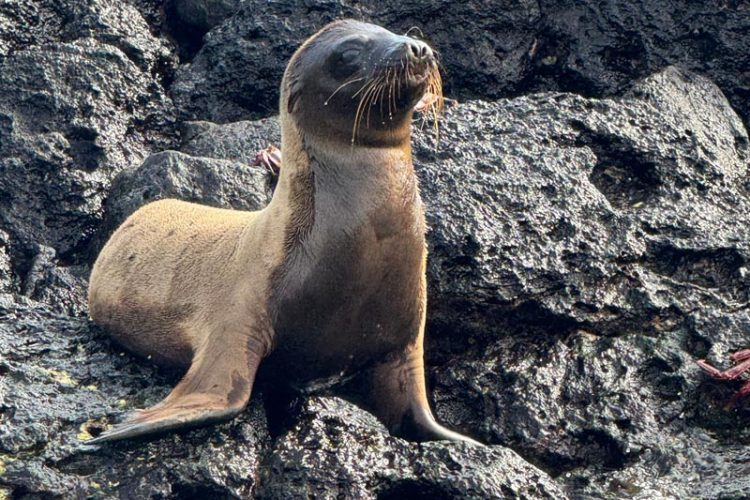
South Plaza Island
In the afternoon, we visited South Plaza Island, home to hundreds of land iguanas and more sea lions. Here we learned how territorial the alpha male sea lions are and how the alpha male is only the “alpha” for three months before a new male comes in and takes over. As the alpha male, they are responsible for keeping the females and babies safe and other males away. It was exciting to learn about the dynamics of sea lions.
Overall, this trip exceeded my expectations. The photos you see simply do not do it justice. If you were to ask the other 12 Jayhawks on the trip what their favorite part was, you would get a variety of answers. Some enjoyed the tortoises, others enjoyed snorkeling with the sea lions and the sea turtle, while others found the iguanas and the various birds their favorite.

From start to finish, this trip was very well put together and did a great job of exposing you to the variety of landscapes, climates and wildlife that are found on the hundreds of islands and islets that make up the Galapagos. If you ever have the chance to visit the Galapagos, I highly recommend it. There is simply nothing better than traveling to a beautiful place such as the Galapagos Islands with a group of fellow Jayhawks!
The Flying Jayhawks “The Galapagos Islands” trip took place January 17-27, 2024. The trip was hosted by Austin Johanning, g’21, the Alumni Association’s assistant director of donor relations. Find more information about Flying Jayhawks trips, including a schedule, or sign up for travel emails, on our Flying Jayhawks webpage.
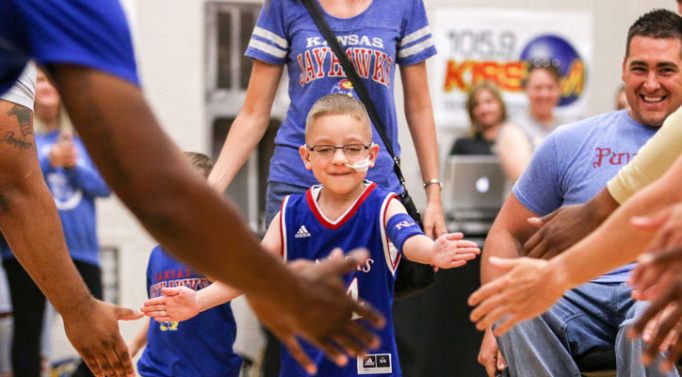
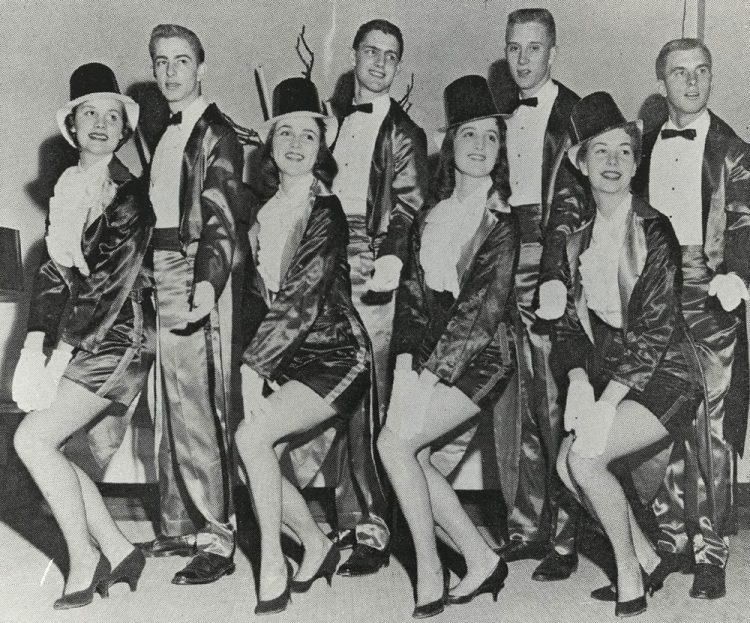
Editor’s note: This story originally appeared on kualumni.org in 2019. We brought it back from the archives in celebration of the 75th Rock Chalk Revue!
On the 70th anniversary, the past and the present of The University of Kansas’ student-run variety show for a cause.
First of Many
Variety shows on KU’s campus trace back to “College Daze,” a revue sponsored by the student union introduced after World War II.
In 1949, Roy Wonder, b’50, wanted a campus variety show with higher student participation.

At the time, Kansas State had their own variety show, the Y-Orpheum. (The name refers to a combined grouping of the local YMCA and YWCA.) Wonder, a Manhattan native, modeled the new show after Kansas State’s, and even used the Wildcats to drum up interest for the production.
Wonder asked his friend Ross Miller, producer of the 1949 Y-Orpheum, to write to the University Daily Kansan criticizing the “theft.” Several back and forths between the two newspapers later, then KU campus community was ready for the show.
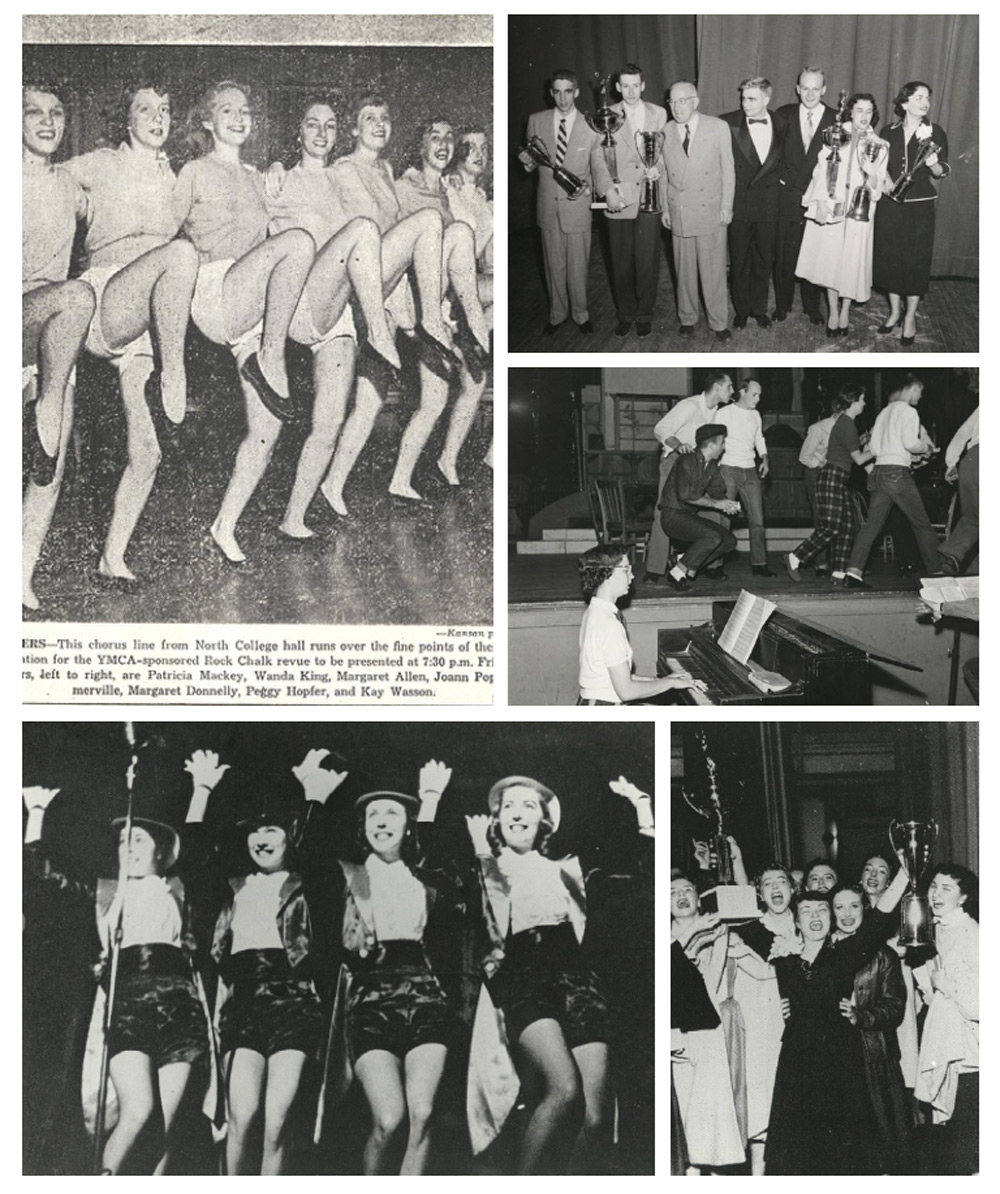
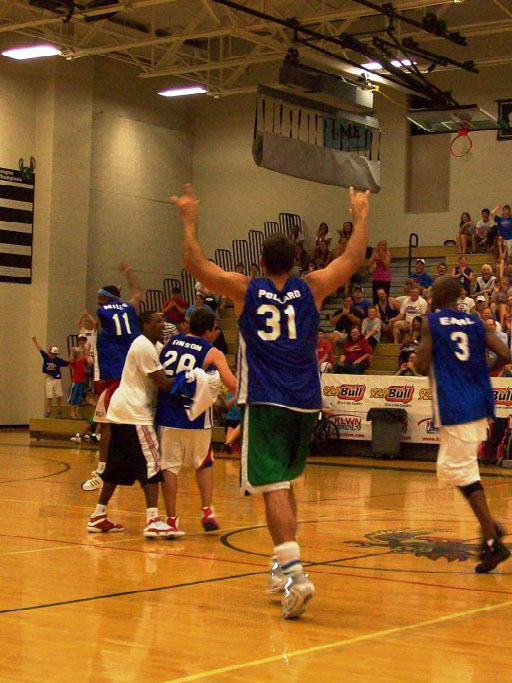
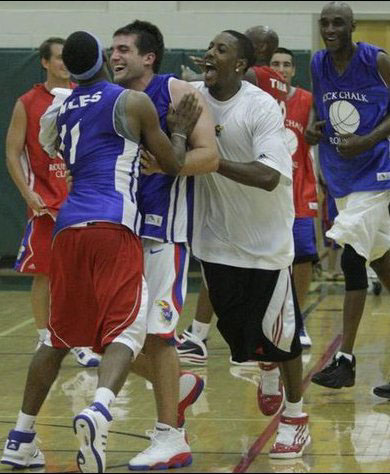
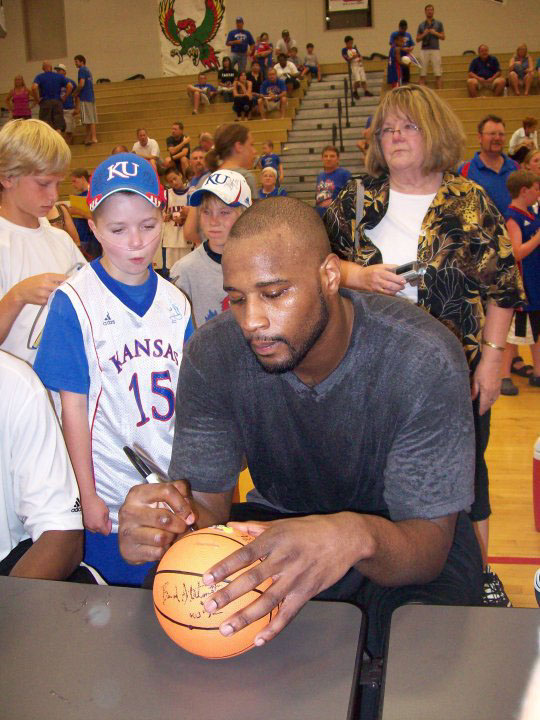
Starting in 2018, the event went from a one-night event to a full weekend, with a VIP dinner on Friday and a celebrity bowling tournament on Saturday.
“The first Roundball Classic had 16 players with 1,000 fans watching at Free State High School,” says Hanni. “This year we have 50 players coming from across the world. Last year we raised over six figures across the three events. It’s changed the scope of the benefits for these families who go up against the fight of cancer.”
Behind the Scenes
The Roundball classic is an annual event, but it takes months of planning to make it happen. A 20-member board convenes to nail down all the logistics: fundraising, auction items, location, travel, lodging, media, concessions, merchandising and more. Most important, they select the “Starting Five”, the group of children battling cancer who will be the stars of the evening and the benefactors of the event’s ticket sales, silent auctions and donations.
The board is filled with those who know the power of the event firsthand. Most of them joined when they had a connection with a child in the Starting Five and have stayed on since.

Every year, it seems the event grows in size, scope and most importantly, money raised.
“It gets bigger and better each year,” Hanni says. “It’s a pretty easy sell to our athletes, to come back to Lawrence to have a reunion and bless these kids. And when you get the star power, Jayhawk nation blows the doors off in terms of money and support. I never would have believed how big it’s grown.”
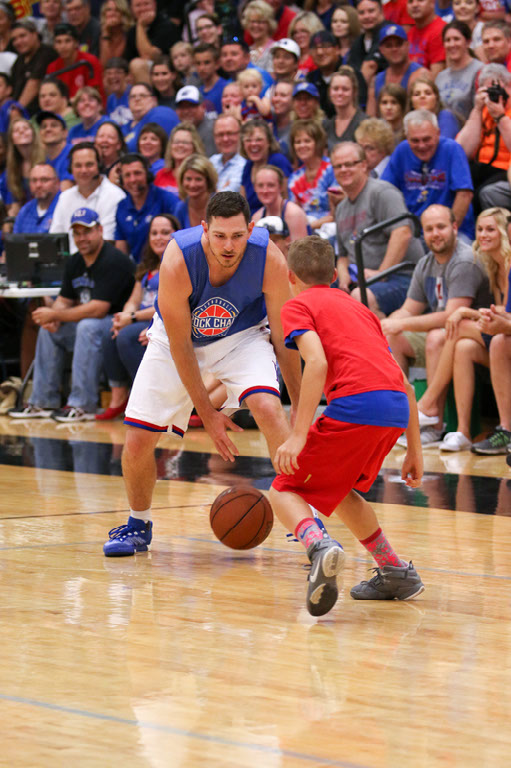
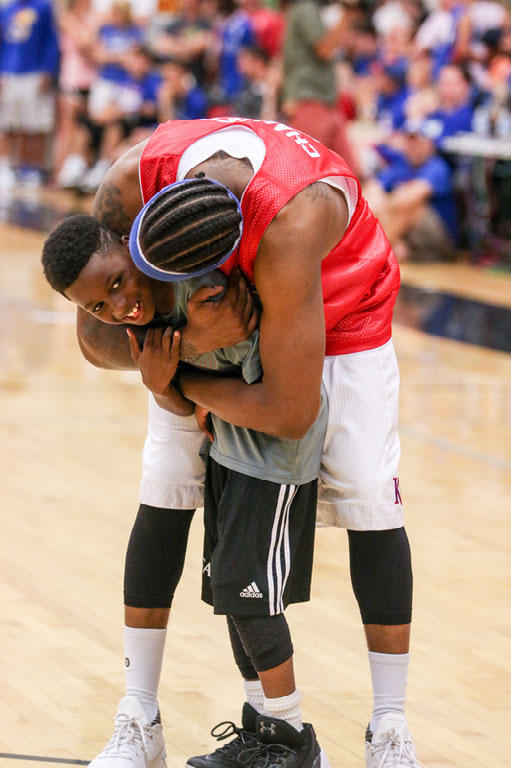
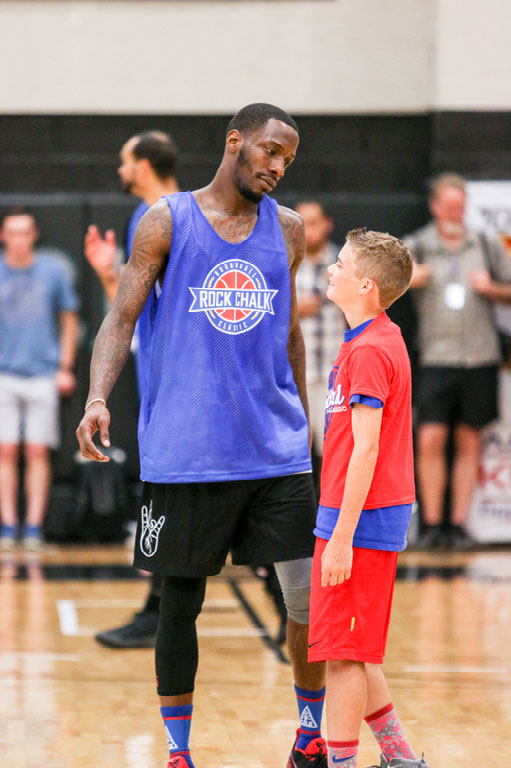
Some athletes’ impact on the children go beyond the weekend too.
“Think about the difference the three days can make in these kids’ lives,” Hanni says. “We’ve had some special ambassadors over the years, who truly get what their platform means. Cole Aldrich is one guy who totally gets it. Any time we have a kid struggling, Cole will record a video to send to them to let the kid know he’s thinking of them.”
Making Memories
Each year brings a new Starting Five, each with their own stories of fights against cancer.
In 2018, Lawrence residents Nolan and Laura Henderson’s 8-month-old son Grit was diagnosed with embryonal rhabdomyosarcoma, and was undergoing treatment at St. Jude’s Children’s Hospital in Memphis. Nolan was in Lawrence to represent the family, but his wife and son couldn’t be there.
Or so he thought. Nolan’s family made a surprise appearance when the Starting Five was introduced, bringing one of the loudest cheers of the night.
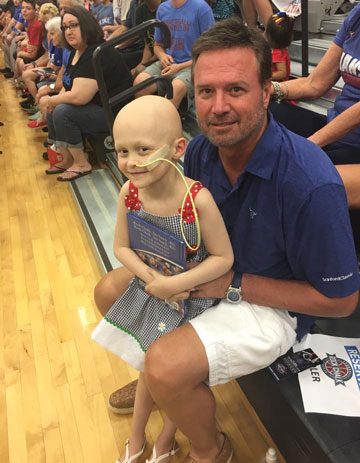
Topeka resident Mindy Howland hadn’t even heard of the Rock Chalk Roundball Classic when she got the news.
A surprise email let her know her six-year-old daughter Rachel was nominated as a beneficiary of 2016’s Roundball Classic. Rachel was diagnosed with Neuroblastoma in 2015.
The night was a blur for the Howlands. Rachel was introduced as a starter by former KU public address announcer Hank Booth and walked through a tunnel of every Jayhawk athlete, ready for high-fives. And for the game, Rachel got a courtside seat next to coach Self.
“She loved KU,” Howland says. “Was crazy about the Jayhawks. She had a book called I am a Jayhawk, and anytime she met a KU basketball or football player, she had them sign the book. It’s filled with signatures.”
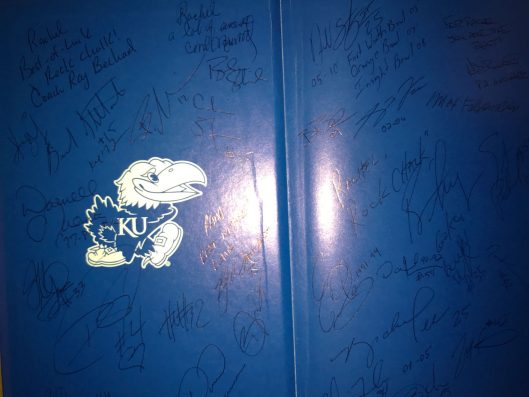
The day they met, Rachel and Hanni immediately hit it off. “They were like best buds, and he was sure to have her in his life from then on,” Howland says. “He took her as his date when he was honored at the Royals in the Buck O’Neil legacy seat. She would light up every time she saw him. She ran up to him and jumped into his arms.”
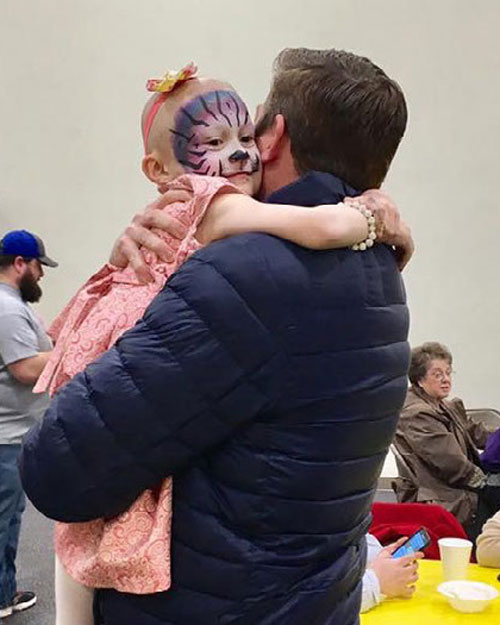
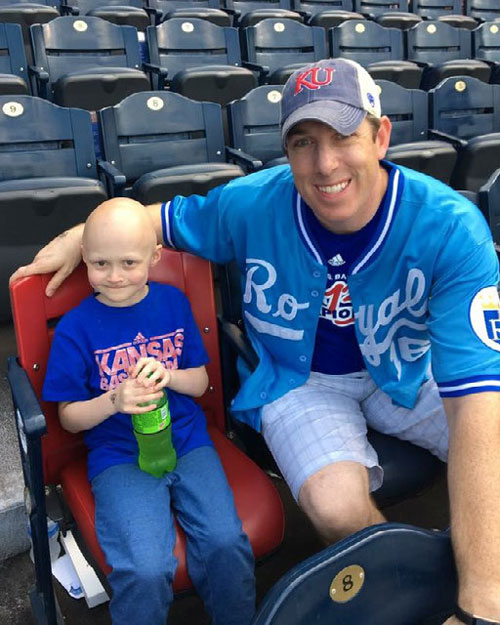
Rachel lost her hard-fought battle with cancer in 2018. At a past year’s Roundball Classic, banners were raised to celebrate Rachel and other beneficiary children who have since passed away.
For the Cause
KU standouts like Frank Mason and Ben McLemore grab the headlines when they come back to Lawrence for the Roundball Classic, but if you dig a little deeper, the best stories are on the sidelines.
“Obviously, I hope the fans have a great time watching the game, and enjoy the autographs and selfies with the players,” Hanni says. “We try to give fans the best interactions with the alumni they can get all year.”
The Rock Chalk Roundball Classic begins Thursday June 8. For more information, including tickets, visit rockchalkroundballclassic.com.
Our Jayhawks Give Back program is presented in partnership with Andrew Wymore, Senior Realtor with ReeceNichols.
Jayhawks Give Back celebrates ’Hawks who are making a difference in ways big and small. Each quarter, we’ll feature a member of the KU family and their story. If you know a Jayhawk who should be featured in Jayhawks Give Back, let us know!
— Ryan Camenzind
